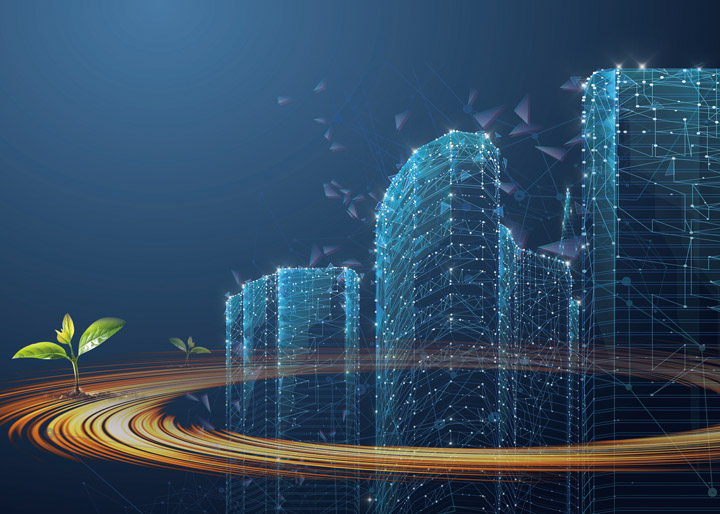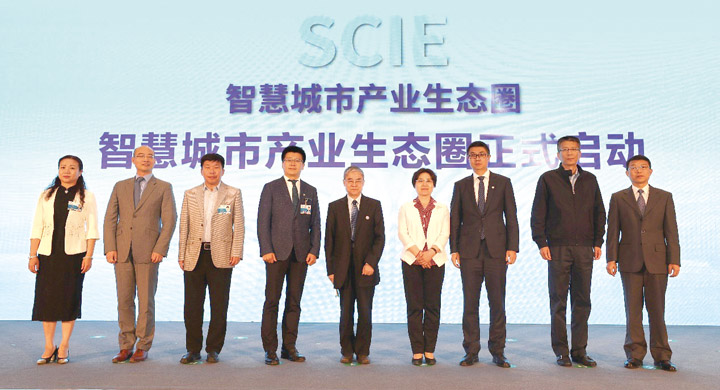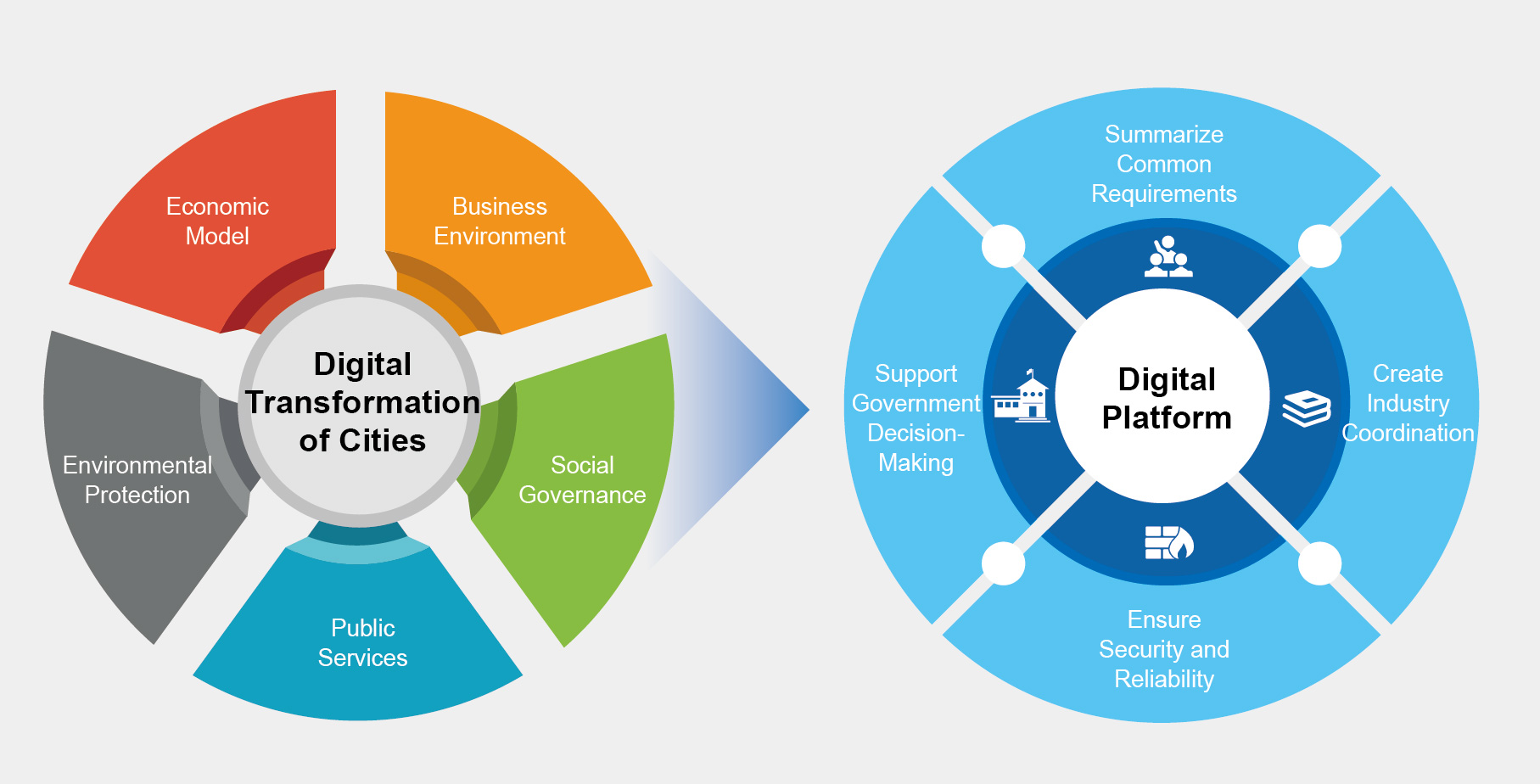Building the Smart City Industry Ecosystem — Attracting More Partners
This site uses cookies. By continuing to browse the site you are agreeing to our use of cookies. Read our privacy policy>
![]()
Enterprise products, solutions & services

On April 20, 2019, both the Preparatory and first Joint Meetings of the Smart City Industry Ecosystem (SCIE) were held in Beijing. On May 7, the organization was officially launched at the Smart Society Forum of the Second Digital China Summit.
SCIE was jointly initiated by Huawei, China Xiong’an Group, the Shenzhen Institute of Standards and Technology (SIST), Beijing University of Aeronautics and Astronautics (Beihang), the China Electronics Standardization Institute, the IC Card Application Service Center of the Ministry of Housing and Urban-Rural Development, and the China Institute of Electronics. Wu Hequan, an academic with the Chinese Academy of Engineering, acted as the chairman of the first SCIE Joint Meeting.
In China, the idea of the Intelligent City has been prominent for more than a decade. Indeed, Intelligent Cities are growing rapidly as the country emerges as an important force for technological and industrial innovation in the global Intelligent City field. However, there are still weaknesses holding back the progress of China’s Intelligent City development. For example, although governments at all levels believe Intelligent City construction is important — and have put much effort into it — ordinary urban dwellers have not experienced an improved sense of wellbeing in their day to day lives. This is because Intelligent Cities are complex systems that require a healthy industry ecosystem.
Intelligent Cities are not just the adoption of a particular technology or the implementation of a single project. This is something we have come to realize over 10 years of Intelligent City construction experience in China. Indeed, only through the digital economy, with the support of industry, and the development of professional services, can we work together to build and continuously develop an industry ecosystem for Intelligent Cities.

The SCIE team at the organization’s launch
While the digital economy has become the driving force of China’s economic growth, Intelligent Cities are the key to its implementation. Intelligent City construction begins with the building of an industry ecosystem. This ecosystem can then be used to address the many challenges of Intelligent City construction, including policy, overall requirements, and top-level design. In turn, the digital transformation of cities becomes the foundation for — and an inevitable path of — Intelligent City construction.
Digital transformation of cities requires innovation of the economic model, an improved business environment, enhanced social governance, better public services, and boosted environmental protection capabilities. All of these problems need to be resolved by breaking out of the current model, which divides city construction from its management and Operations and Maintenance (O&M). The wisdom of industry think-tanks must be pooled to meet the requirements for Intelligent City construction, namely: systematic policies, full resource sharing, continuous ecosystem improvement, and the introduction of new technology.
Industry think-tanks need to support government decision-making and summarize common customer requirements. Digital platforms are essential to providing new ICT capabilities, making the development of smart applications simpler and facilitating innovation. In addition, a healthy ecosystem must be built to achieve industry collaboration and mutually beneficial cooperation.
Take Xiong’an New Area as an example. President Xi Jinping positioned Xiong’an as an innovative and green Intelligent City. Xiong’an will build a brand new digital platform enabled by industry policies and new technologies. Xiong’an is integrating geographical information of the physical world with virtual space to form ubiquitous connections and generate massive amounts of data at the city level. This will eliminate boundaries between government departments and enable deep association of data.
A digital platform that integrates technologies, data, and services is crucial for all this to happen.

Figure 2. Building a digital platform and accumulating capabilities through the digital transformation of cities
As a leading global ICT solutions provider, Huawei needs to take into consideration its core value to society in order to better meet the needs of society and grow itself. This requires Huawei to identify the areas that can create real value for society and reshape people’s lives, such as high-speed railways and eCommerce.
Huawei has been exploring the Intelligent City industry since 2012. Through years of practice, we know what Intelligent Cities need and we know what we have to offer. Experience has shown that the intelligence required by Intelligent Cities can never be accomplished by technology alone; Intelligent Cities must be driven by both technology and services . So how can we integrate technologies with services? We must look at services from the perspective of technology, while identifying the technologies that can best promote service development.
To re-emphasize the point: Intelligent Cities can only be established with the support of both technology and services.
SCIE aims to define the reference architecture oriented toward the industry market, build a digital platform, and optimize and integrate new ICT technologies, aggregating data to activate the digital assets of cities and reduce the difficulties in adopting new technologies. This way, we can develop innovative city applications with increased value, promote the digital transformation of cities, and boost the development of the Intelligent City industry.
SCIE will offer something of unique value to society and the industry, including:
• Realizing full industry chain participation and allowing all industry players to bring to bear their respective advantages to realize a model in which the sum is greater than the parts.
• Offering numerous ICT capabilities through a digital platform, implementing data and capability sharing, and providing complete service capabilities together with applications and terminals.
• Focusing on key scenarios in accordance with policies, defining leading architectures, increasing products and connections, and driving industry prosperity through automated tests.
Intelligent City construction involves policy guidance, analysis of requirements, top-level design, solution design, construction implementation, and experience replication. To promote the development of the Intelligent City industry, SCIE needs to design its own functions to meet the requirements of the construction process.
Firstly, we must focus on customer requirements, including diverse requirements of Intelligent City operators, users, and policy makers. Secondly, Intelligent City construction involves the adoption of new technologies and the integration of new technologies with existing technologies. This requires capability openness and technical innovation. Therefore, a technology implementation center is needed. Two committees must be established for SCIE: the Strategy Steering Committee, and the Expert Committee. Furthermore, other end-to-end functional organizations must also be set up with SCIE, in response to industry policies, application scenarios, technical architecture, security technology, and more. Last but not least, SCIE must be able to continuously produce valuable content, including research reports, white papers, reference architectures, standard requirements, test platforms, and model applications.
SCIE will become a platform of mutually beneficial cooperation, attracting more players to contribute to the construction of Intelligent Cities, creating an innovation and development model driven by both technology and services, and bringing government administration, digital economic development, and smart society building to a new level. Meanwhile, Intelligent Cities and the digital economy will be the dual engines that drive innovation and development in China, boosting the country’s informatization and urbanization.